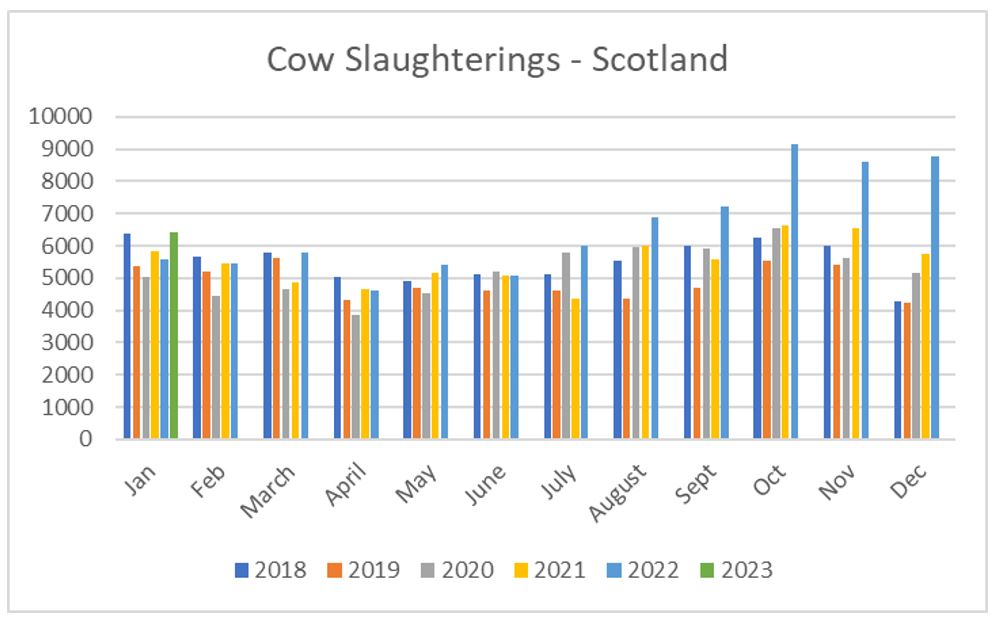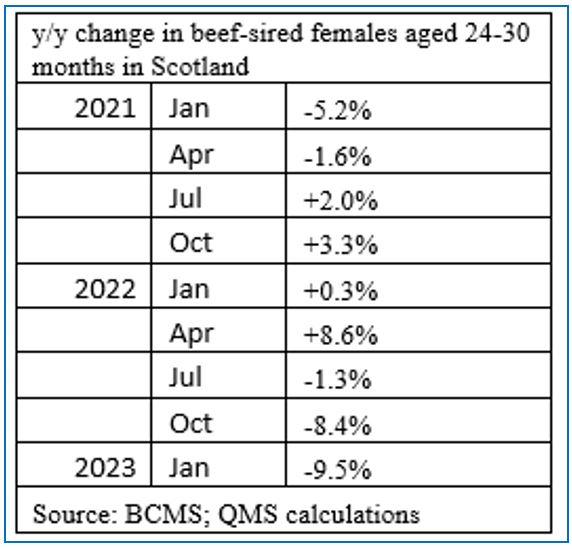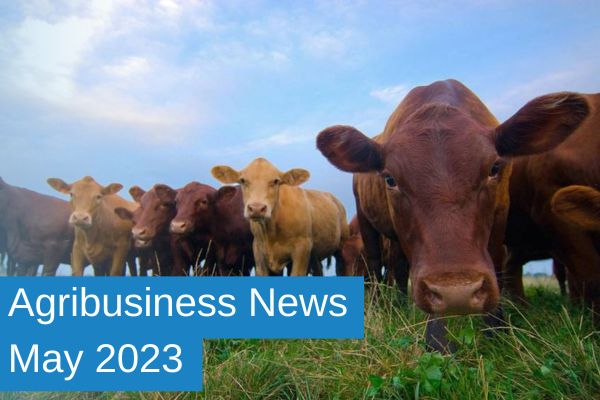Agribusiness News May 2023 – Sector Focus: National Beef Herd
1 May 2023Falling Beef Cow Numbers – Should We Be Worried?
As discussed previously in the monthly beef outlooks, the higher number of cows being culled has implications going forward for the critical mass of beef in Scotland.
The graph below illustrates the seasonality of cull cows in Scotland and the movement in numbers culled each month over the last five years.
With the input cost increases and high cull cow prices, it is of little surprise that we ended 2022 having culled 23% more cows than the previous four year average (80,539hd vs. 65,369hd). However, this does not take into account cows that were slaughtered out with Scotland, so the total cull rate is likely to be even higher.

Muddy waters where replacements are concerned
The January 2023 figures from QMS and BCMS show beef-sired females over 30 months on Scottish farms to be 3.3% less than in January 2022. This is to be expected with the higher cull cow price and producers clearing out some of their older cows.
What this does not tell us is are there a larger number of 24-30 month beef sired females on farm than a year ago being kept to replace these older ones that have been culled?
The change in beef-sired females 24-30 months year on year table from Iain MacDonald at QMS clearly shows that the drop in 24-30 months beef-sired females in October 2022 has been a significant contributor to the drop in beef sired females over 30 months in January 2023.
If the trend follows for the next quarter, we expect April 2023 over 30 months females to be down again on the year, with 9.5% less 24-30 month females on farm in January 2023.

Less breeding stock means less cattle – or not?
Prime cattle numbers are already tighter in supply, with QMS and BCMS quoting cattle 12-30 months down 3.3% on the year and attributing a large proportion of that to the volume of cattle that continue to go south of the border from the store sales.
If the contraction of the breeding herd that we are currently experiencing continues, the longer-term availability of prime cattle looks to remain tight.
However, with national average calving percentages of 86% and rearing rates of 80%, there is potential to increase calves produced without increasing cow numbers.
By increasing the rearing rate to 90% or above, the reduction in prime cattle availability in the coming years could be stopped.
While this would require improvements to herd fertility through appropriate nutrition & health planning, and selection of maternal traits in breeding females; the financial benefits to the suckler enterprise could be significant.
Lesley Wylie, Beef Specialist, SAC Consulting
lesley.wylie@sac.co.uk
Sign up to the FAS newsletter
Receive updates on news, events and publications from Scotland’s Farm Advisory Service

